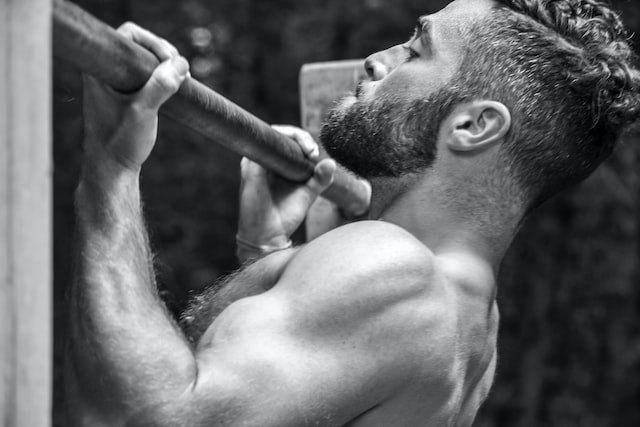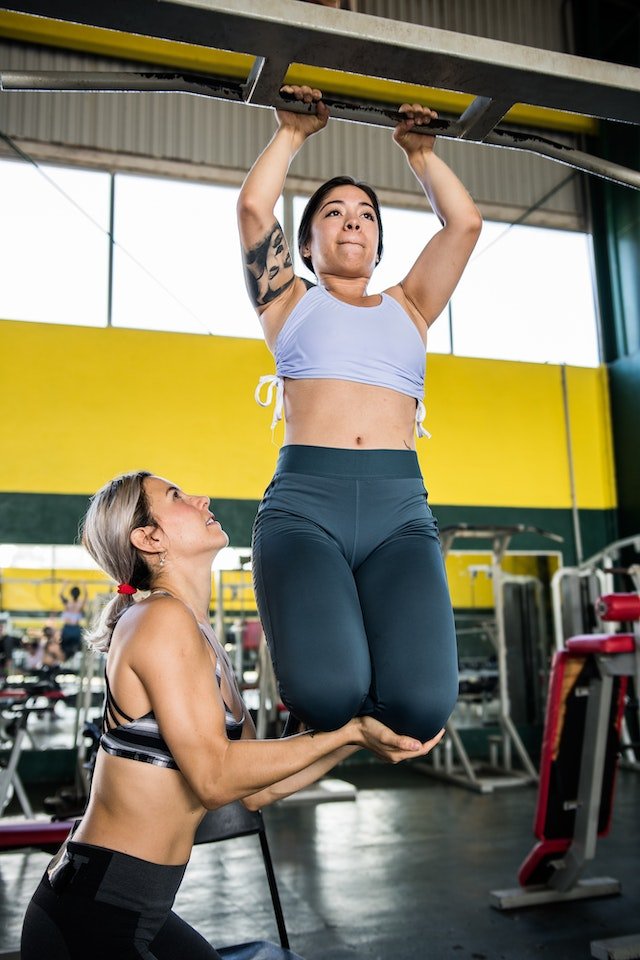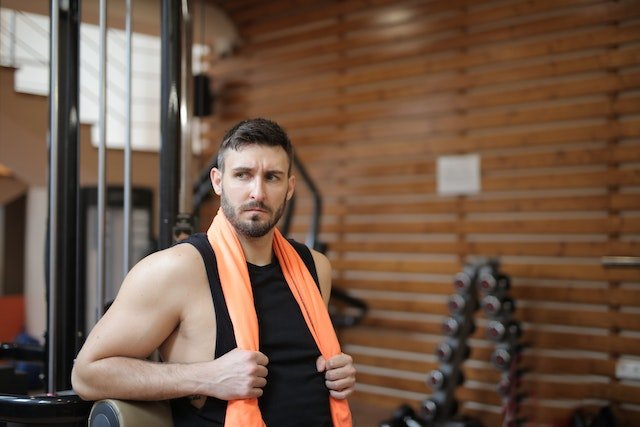
Why Are Pull Ups Harder Than Chin Ups? Everything You Need To Know
Have you ever wondered why pull ups are harder than chin ups? It seems like a simple question, but the answer is actually a little more complicated.
In this blog post, we’ll take a look at the differences between these two exercises, and we’ll discuss some of the reasons why pull ups can be more challenging for athletes.
We’ll also provide some tips for improving your performance on pull ups. So let’s get to it.
Why are pull ups harder than chin ups?
One of the main reasons pull ups are harder than chin ups is because of grip width. When you perform a chin up, your hands are positioned close together on the bar. This gives you a strong mechanical advantage and allows you to use your biceps more effectively. In contrast, when you do a pull up, your hands are placed further apart on the bar. This puts your biceps at a mechanical disadvantage and forces you to rely more on your back muscles. Another reason why pull ups are harder is because they offer a shorter range of motion. When you do a chin up, your elbows move through a greater range of motion than they do in a pull up. This means that your muscles have to work harder to move the same weight through a greater range of motion. Finally, pull ups are typically performed with a pronated grip (palms facing away from you), while chin ups are usually done with a supinated grip (palms facing towards you). This small difference can actually make a big difference in the difficulty of the exercise. So, those are some of the main reasons why pull ups are typically harder than chin ups. If you’re struggling to perform pull ups, don’t worry – there are a few things you can do to make them easier.
What muscles do they use?
One of the main muscles used in pull ups is the latissimus dorsi, or “lats” for short. This large muscle runs from the lower back down to the upper arm, and it’s responsible for pulling the arms down and back. The biceps are also used in pull ups, but to a lesser extent than the lats.
Other muscles used in pull ups include the trapezius, rhomboids, and erector spinae.
While the main muscles used in chin ups are the biceps, other muscles used include the brachialis, brachioradialis, and forearm extensors.
Now we’re clear on the muscles used in both exercises, let’s look at some of the reasons why pull ups are harder than chin ups…
Grip width
As we mentioned earlier, grip width is one of the main reasons pull ups are harder than chin ups. When you do a chin up, your hands are close together on the bar, which gives you an advantage and allows you to use your biceps more effectively.
In contrast, when you do a pull up, your hands are placed further apart on the bar. This puts your biceps at a disadvantage and forces you to rely more on your back muscles.
If you’re struggling with pull ups, try narrowing your grip. This will make the exercise easier and allow you to focus more on using your back muscles.
If you wanted to keep your grip wide, you could try using a false grip. This is where you place your hands on the bar with your palms facing towards you (as if you were doing a chin up).
This will make the exercise harder, but it will also force you to use your back muscles more.

Pronated vs supinated grip
Another small difference between chin ups and pull up is the position of your hands on the bar.
Chin ups are typically performed with a supinated grip, which means that your palms are facing towards you. Whereas pull ups are usually done with a pronated grip, which means that your palms are facing away from you.
This small difference can actually make a big difference in the difficulty of the exercise because it changes the angle at which your muscles have to work.
A supinated grip puts your biceps in a better position to generate force, making the chin up easier. Whereas a pronated grip makes it harder for your biceps to generate force, making the pull up harder.
You can also experiment with different grip widths and hand positions to make the exercise either easier or harder.
To make a chin up easier, you can try using a narrower grip. Whereas to make a pull up harder, you can try using a wider grip.
You can also try using a false grip (as we mentioned earlier) to make the chin up harder. Or you can use a neutral grip (where your palms are facing each other) to make the pull up easier.
Related: Why Are My Pull Ups Uneven? Everything You Need To Know For Rapid Progress
Range of motion
Another reason why pull ups are harder than chin ups is that they offer a shorter range of motion. When you do a chin up, your elbows move through a greater range of motion than they do in a pull up.
This means that your muscles have to work harder to move the same weight through a greater range of motion.
Not only that but when you do a pull up your arms are wider apart than they are in a chin up. This puts your shoulders in a more vulnerable position and makes it harder to keep your body stabilized.
Whereas a chin up offers a greater range of motion and puts your shoulders in a stronger position, making the exercise easier.
Anatomically speaking, pull ups are a more difficult exercise because they require you to lift your entire body weight with just your arms. In contrast, chin ups only require you to lift your torso, which is a smaller and lighter load.
This is why most people can do more chin ups than pull ups. And it’s also why chin ups are typically considered an easier exercise.
Scapula engagement
When you do a chin up, your scapulae (shoulder blades) are pushed down and back, which gives you a better range of motion and helps to engage your lats more effectively.
In contrast, when you do a pull up, your scapulae are pulled down and forward, which gives you a shorter range of motion and makes it harder to engage your lats.
This is why chin ups are often recommended for people who want to build bigger back muscles. Because they allow you to better target the muscles that you’re trying to work.
Pull ups, on the other hand, are better for developing strength and power. This is because they require you to lift your entire body weight with just your arms.

Leverage of pivot points
The chin up movement is executed by pulling your torso towards your body with your arms, providing you with a mechanical advantage.
In contrast, when doing a pull up, your arms are extended out in front of your body, which puts your torso at a mechanical disadvantage. This is why chin ups are typically easier than pull ups.
When we try and pull something with our arms outstretched in front of us, we have to work against gravity more than if our arms were by our sides. This is due to the fact that our body weight is further away from the fulcrum (or pivot point).
When we are pulling an object that closer to our body, less force is required to move it the same distance as if we were pulling it further away from our body. This is because our body weight is closer to the fulcrum, which means that less leverage is required to move the object.
The same principle applies to chin ups and pull ups. This is why you may find it easier to do a chin up with one arm than a pull up with two arms.
With a chin up, your arms are pulling your body weight in a more vertical direction. Whereas with a pull up, your arms are pulling your body weight in a more horizontal direction.
This makes the chin up a more joint-friendly exercise and easier on your muscles.
Related: When to Add Weight to Pull Ups? (12 Hints, Tips & Answers)
How can you make them easier?
There are a few things that you can do to make pull ups easier.
Firstly, you can use an overhand grip (palms facing away from you) instead of an underhand grip (palms facing towards you). This will help to engage your back muscles more effectively.
Secondly, you can place your hands closer together on the bar. This will give you a stronger mechanical advantage and make the exercise easier.
Thirdly, you can use a resistance band to help you with the movement. This will take some of the load off your arms and allow you to focus on engaging your back muscles.
Finally, you can try doing assisted pull ups. This is where you have someone else help you with the movement, either by holding onto your legs or by providing resistance with a resistance band.
Doing assisted pull ups will make the exercise easier and allow you to focus on engaging your back muscles. If you do them regularly, they will also help you to build up the strength and power needed to do unassisted pull ups.

So, which exercise is better?
Chin ups may be easier than pull ups but that doesn’t necessarily mean that they’re better. It all depends on your goals.
Figure out what you want to achieve and then select the exercise that will help you to reach your goals. If you want to build bigger back muscles, chin ups are a better choice. But if you’re looking to develop strength and power, pull ups are a better option.
See what works best for you and then stick with it. Remember, the most important thing is that you keep challenging yourself and progressing forwards. So, don’t be afraid to mix things up and try new things.
Related: Why Are My Pull Ups So Weak? (13 Critical Tips To Get Over Hump)
Final thoughts…
In conclusion, pull ups are harder than chin ups for a number of reasons. These include grip width, range of motion and leverage of pivot points.
However, there are ways to make pull ups easier, such as using an overhand grip or placing your hands closer together on the bar.
Ultimately, it all comes down to your objectives when it comes to picking the best exercise for you.
Do you find pull ups harder than chin ups? Let me know in the comments below.


